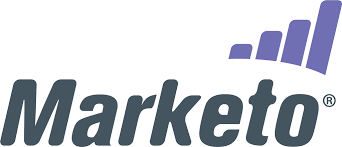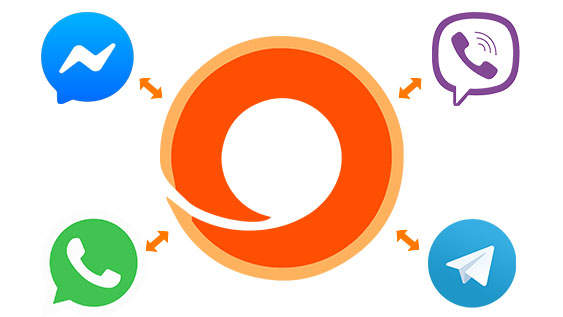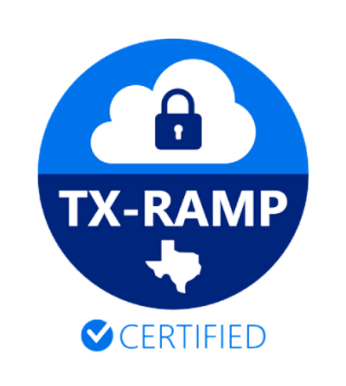
Your Guide to 10DLC Registration & Regulations
Your Guide to 10DLC Registration & Regulations
Text messaging has become a valuable communication channel for businesses with their prospects and customers. In fact, according to one survey, almost 90% of smartphone users choose texting over talking to interact with other people and with businesses as well. Those users open 98% of the text messages they receive, 90% of them within three seconds. That's a response rate unmatched by any other form of business-to-consumer communication.
In contrast, consumers have become wary of opening or responding to emails and phone calls from any source not personally known to them. The overall email answer rate is under 17%, and less than half of phone calls are picked up. That's because spam has taken over these communication channels (it seems to many consumers).
What is spam? Any communication from a business that a consumer doesn't want to receive. And text messaging is now facing the same spam issue that brought down email and phone calls as favored means for reaching potential customers. By inundating consumers with unwanted text messages, some irresponsible businesses threaten to poison the waters for the entire industry.
Seeing the danger of text messaging on the horizon, the principal North American mobile carriers, such as AT&T, Verizon, and T-Mobile, decided they needed to do something to protect their customers from being spammed by unscrupulous actors. The result is 10DLC, which allows businesses to use text messaging to reach potential customers while eliminating the danger of excessive spam, causing customers to be turned off to business text messages as they were to email and phone calls.
- What is 10DLC?
- Why is 10DLC being introduced?
- How does 10DLC work?
- What are the CTIA Guidelines?
- Getting started with 10DLC
What is 10DLC?
"10DLC" stands for 10-digit long code. Businesses initially used the format of the traditional 10-digit telephone number (723-123-4567, for example) exclusively for person-to-person (P2P) calls. Starting in 2021, however, businesses began using 10-digit numbers for automated mass text message campaigns. The North American mobile network carriers introduced the 10DLC system to facilitate and regulate the use of 10-digit numbers for application-to-person (A2P) text messaging.
The industry's official registration authority, called The Campaign Registry (TCR), defines 10DLC this way:
"10 Digit Long Code (10DLC) is the new standard for Application-to-Person (A2P) text messaging utilizing a traditional ten-digit phone number. Although similar to the existing long code, 10DLC is a reliable messaging channel with throughput levels suitable for SMS campaigns and is sanctioned by the mobile operators for A2P messaging."
While all 10DLC numbers are ten digits long, not all 10-digit numbers are 10DLC. That's because 10DLC is designed to allow higher messaging throughput (in transactions per minute) and higher delivery rates (the number of messages that get through to the intended recipient) than regular P2P 10-digit numbers support.
However, 10DLC codes are like traditional 10-digit numbers in that brands can use them for phone calls and texting.
Related: What 10DLC Is and How It's Important to Mass Texting
Why is 10DLC being introduced?


Before 10DLC, marketers usually used five-digit or six-digit short codes for their mass text messaging campaigns. These numbers are leased to businesses and were typically shared by more than one company. Through media advertisements, consumers are often asked to text a company-specific keyword to a given short code (for example, "Text LUCKY to 12345"). By doing so, the consumer implicitly opts into receiving automated text messages from that company.
Short code numbers shared between multiple companies became a significant problem. Some irresponsible businesses mounted short code campaigns that blasted text messages to the smartphones of thousands of recipients. Even though they may have opted in (perhaps unwittingly) to receiving such messages, customers perceived them as mostly spam. They complained loudly, both to the mobile carriers and to government regulators.
Mobile carriers don't like receiving such complaints. Still, because a short code number might have been shared among tens of thousands of businesses, the carriers found it challenging to identify the offenders and police their activities. To combat this problem, short codes can no longer be shared leaving companies with 2 options, messaging over 10 digit long codes, or go through a very strict vetting process to obtain a dedicated short code.
10DLC is being instituted in the hope of all but eliminating spam texting while simultaneously making it more accessible, more convenient, and more cost-effective for businesses to use text messaging responsibly. The carriers stopped allowing Shared Short Codes in June 2021 and now require senders to use 10DLC numbers instead. With 10DLC, businesses can send SMS and MMS text messages using long codes with higher throughput rates than P2P long code traffic.
Related: How to Send Mass Text Messages to Customers
How does 10DLC work?


10DLC requires users to register their brands and the individual campaigns they intend to mount with The Campaign Registry to clear who is sending what. It also requires senders to follow guidelines and best practices established by the Cellular Telecommunications Industry Association, or CTIA.
The brand registration, which needs to be done only once, associates a business's corporate profile (name, address, phone number, etc.) with a specific brand name. Based on this information, TCR assigns each brand a trust rating, determining the throughput rates and costs to which that brand will be subjected.
This process allows the carriers to track businesses' messaging activities and hold them accountable to an industry-wide standard. Since all 10DLC messages sent by a company are associated with a brand and a campaign, recipients can unambiguously identify the source of any message. As a result, spammers cannot use 10DLC to send messages anonymously.
Businesses that fail to register their brand and campaigns with TCR may have their text messages blocked.
To whom does 10DLC apply?
10DLC is now required for all U.S. long code traffic. Therefore, 10DLC applies to you if your business meets either of these criteria:
- You are currently sending A2P traffic using long codes.
- You are a reseller with customers that are sending long code A2P traffic.
Does 10DLC affect P2P traffic?
Use of P2P long codes for business text messaging is now prohibited. Carriers will impose significant fines on businesses found to be engaging in this practice. Personal, non-business P2P messaging is not affected.
Are Toll-Free Numbers affected by 10DLC?
Since May 31, 2022, all major U.S. mobile carriers, and most major carriers in Canada, require any new toll-free number (TFN) used for text messaging to be verified. As of September 30, 2022, all TFNs, whether new or previously existing, must meet that requirement, and any TFN traffic that does not will be blocked.
Verification, which is currently free, means that the carrier must approve your use case before TFN texting is allowed. Use cases that don't meet CTIA guidelines may not be approved.
What are the CTIA Guidelines?


The CTIA guidelines are spelled out in its Messaging Principles and Best Practices (MPBP) document. They are "a set of voluntary best practices developed by CTIA's member companies throughout the wireless messaging ecosystem" and are intended to facilitate P2P and A2P text messaging while protecting consumers from spam.
The MPBP addresses a wide range of issues in detail. Let's take a brief look at four areas of particular concern:
P2P vs. A2P
The CTIA guidelines specify whether a text messaging campaign should be considered P2P or A2P. In general, businesses should assume that their text messaging to consumers is entirely A2P—they should not be engaging in P2P texting at all. The MPBP warns that:
"If Consumer (P2P) messaging traffic is operating in a manner inconsistent with typical Consumer operation, such traffic may be filtered or subject to a Service Provider's Unwanted Messaging threat mitigation efforts."
Consumer Consent
Senders must obtain consumer consent for any messaging and express written permission for marketing messages. Consumers must be able to revoke that consent at any time with ease. The guidelines detail how a brand should handle consumer opt-in and opt-out to ensure that informed consent is in effect any time text messages are sent to that recipient.
Content
The CTIA places strict limits or total prohibitions on SHAFT content—Sex, Hate, Alcohol, Firearms, and Tobacco. The guidelines are specific about the steps senders should take to ensure their messaging is unobjectionable:
"Message Senders should use reasonable efforts to prevent and combat unwanted or unlawful messaging traffic, including spam and unlawful spoofing… [They] should take affirmative steps and employ tools to monitor and prevent Unwanted Messages and content."
10DLC Regulation


Beyond the CTIA guidelines, which are voluntary, there are regulatory regimes in every country that have the force of law. In the U.S., text messaging is regulated under the Telephone Consumer Protection Act or TCPA. Although the TCPA, initially written in 1991, does not explicitly mention text messaging, for law purposes, text messages are considered phone calls.
The TCPA attaches legal accountability to many of the issues covered by the CTIA guidelines, including requirements concerning consumer consent, permissible content types, and terms and conditions. In particular, under the TCPA, your terms and conditions statement, when implicitly or explicitly accepted by the user, constitutes a "written agreement" between you and that consumer.
Failure to adhere to TCPA regulations can result in penalties of up to $500 per text message and up to $1500 per offense for willful violations. In addition, it may subject you to class-action lawsuits by consumers and federal, state, or local regulators. There's no cap on the damages you might incur—they could run into the millions.
The good news is that if you strictly follow the CTIA guidelines, you'll almost certainly comply with the TCPA.
Related: How to Send Mass Text Messages to Customers
The 10DLC rollout timeline
For all practical purposes, 10DLC is now in full effect—the major U.S. carriers, including AT&T, Verizon, and T-Mobile/Sprint, all went live with their 10DLC services by May 31, 2021.
The carriers terminated shared short codes in June 2021. Since that date, all senders must use dedicated short codes or convert to 10DLC.
The carriers began enforcing TCR registration on October 1, 2021. From that point, they have been throttling or blocking unregistered traffic and imposing fines on companies that fail to comply with 10DLC rules.
Since March 1, 2022, businesses must send all long code SMS and MMS traffic over 10DLC.
What fees are associated with 10DLC?
Fees for registering your brand and campaigns include:
- a $4 non-refundable fee to register a brand
- a $50 one-time cost per campaign
- a recurring charge of $10 per month, per campaign, per brand
- a $50 one-time setup fee assessed by T-Mobile
- a per-message 10DLC surcharge implemented by each carrier as a pass-through fee that may apply
Other fees may apply, such as T-Mobile's $50 activation fee for each campaign and various costs from all the carriers for violations of the 10DLC rules.
Businesses that send fewer than 3,000 messages daily to the U.S. and use five or fewer long-code numbers for such messages qualify for the Starter Plan. (T-Mobile/Sprint limits Starter Plan users to 1,000 messages per day). This plan allows you to register free, with no monthly charges.
How to register for 10DLC
Registration for 10DLC is done in two parts: brand and campaign.
Brand registration
The brand registration associates your business's corporate profile with a specific brand name. You need only register your brand once (one brand per EIN). To do so, you must supply information such as company name and address, type of organization (private, publicly-traded, nonprofit), tax ID number/EIN, and contact information, including email, phone, and website.
Currently, only U.S. brands can be registered.
Campaign registration
You must register a campaign for each of your messaging use cases. Information required includes the brand with which this campaign is associated, a description of the use case and the campaign itself, and sample messages.
Brand Score
TCR uses your corporate profile information to assign you a trust rating or brand score, determining the throughput rates and costs that will attach to your brand. Based on your brand score and the type of campaign, each campaign is assigned a maximum daily limit on the number of messages or message segments per second (MPS) that can be delivered. This limit applies to all the phone numbers associated with that campaign.
The Registration Process
You can typically register your brand and campaigns through a portal on your text message marketing service's platform and record an unlimited number of campaigns for each brand. While you can register an unlimited number of campaigns, there is a cap on the number of phone numbers associated with each campaign. That cap is currently 49.
Getting started with 10DLC
If you're ready to begin your 10DLC journey, TrueDialog can help. We can guide you through the process of registering your brand and campaigns right from our user interface. TrueDialog provides a world-class text messaging platform and the support to match to maximize the effectiveness of your text message marketing strategy.
If you'd like to know more, please contact us. We'll be happy to help you get started with 10DLC.
Take your marketing to the next level
Ready to get started with a FREE trial?
 Salesforce
Salesforce





